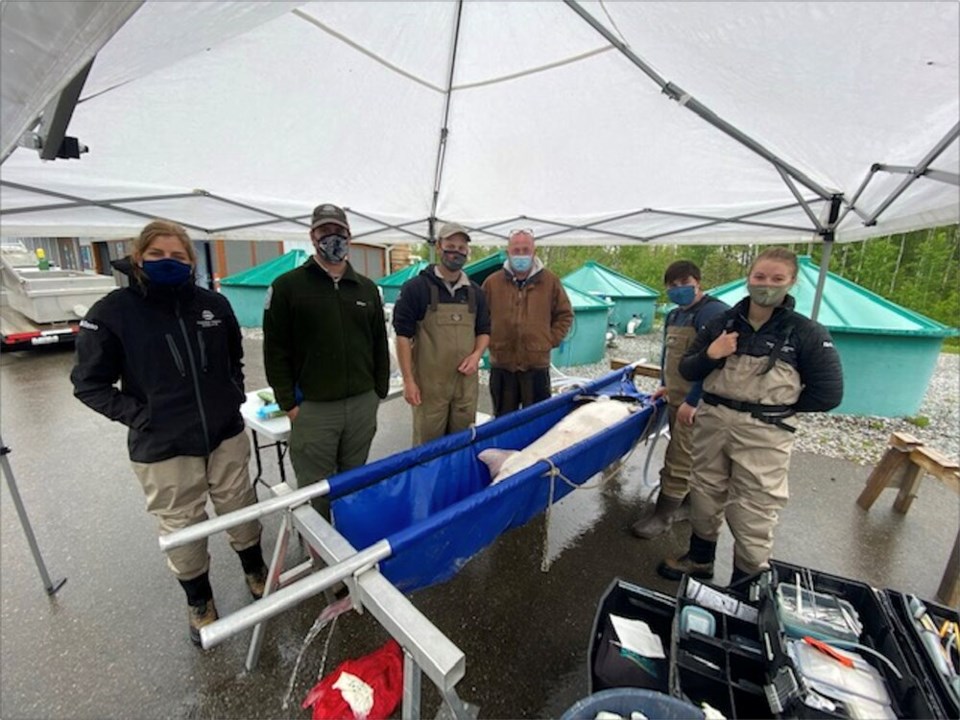Scientists from sa国际传媒’s provincial government are investigating a spike in dead sturgeons after 11 adult fish were found dead on the Nechako River over the past week.
The fish — which can weigh hundreds of kilograms, grow to up to six metres long and live for more than 100 years — showed no signs of external injuries. Laboratory results indicate they didn't die from disease, chemical exposure or due to the activities of anglers or gill net fishers.
“It’s definitely a concern,” said Steve McAdam, the sturgeon recovery lead for the province. “It doesn’t point to water quality because you’d see other fish dead.”
McAdam wouldn’t speculate on what may have caused the deaths. He said his partners in the field are busy collecting samples and are preparing for necropsies in Prince George next week.
Some of the fish have been found severely decomposed. Getting to other dead sturgeon early could help them solve the mystery, he said.
That’s where the public comes in.
“The more eyes and ears we have out there, the better,” said McAdam.
The provincial government says staff from the Ministry of Land, Water and Resource Stewardship and the Ministry of Forests have contacted local First Nations about these deaths.
Anyone who finds a dead white sturgeon in the Nechako region is asked to send details, including a photograph, to Nikolaus Gantner at 250-649-2876, or [email protected].
Worrying signs for an endangered species
The white sturgeon of the Upper Fraser and Nechako River have been listed as endangered under the Species At Risk Act since 2012.
Every year, conservationists pull white sturgeons from the rivers’ depths to the surface. The adult fish are transferred into an inverted stretcher where water runs over their gills and body to keep them comfortable and alive.
From land, the adults are brought in tank trailers to the Nechako White Sturgeon Conservation Centre hatchery in Vanderhoof, sa国际传媒 Workers then gently massage the females to work out the eggs into a measuring cup; for the males, they use a syringe to withdraw a semen sample.
Once the eggs are fertilized and then born at the hatchery, two years of regimented feeding and warm water let the juvenile sturgeon reach the size of a five-year-old wild fish.
The laborious process is all done to help juveniles make it into adulthood — something that is put at risk by toxic chemicals, fishing and predation from river otters.
Researchers also believe their dwindling stocks are linked to a rise in agriculture, forestry, urbanization and forestry along the river's edge. In January 2022, a sa国际传媒 Supreme Court found the construction of the Kenney Dam in the 1950s, which today helps supply power to the Rio Tinto Alcan aluminum smelters, has had a , but turned down a local First Nation's request to restore the flow of the river to previous levels.
Correction: A previous version of this story reported that the sturgeon found dead may have died from exposure to chemicals or activities from fishing. In fact, lab results, visual inspections and the circumstances the fish were found in indicate those factors were unlikely to have caused death.

